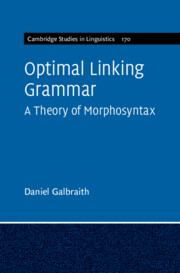1 - Introduction
Published online by Cambridge University Press: 20 April 2023
Summary
The introduction presents a general discussion of syntactic theories, contrasting transformational approaches with those that adopt feature-structural representations to show how they provide differing cognitive models of the human language faculty. The three key components of the OLG framework – Linking Theory (LT), Optimality Theory (OT) and Competing Grammars (CG) – are briefly laid out. These are motivated by phenomena that necessitate multiple levels of case, linking between levels that permits mismatches in some grammars, a means of restricting the linking apparatus while still capturing the data, and a cogent account of morphosyntactic variation. One such phenomenon is introduced: case-marking facts in Insular Scandinavian. The dative–nominative Icelandic predicates are contrasted with the Faroese dative–accusative pattern, along with plural number agreement with the object in Icelandic versus non-agreement in Faroese. Next, an overview is presented of the motivation for each theoretical component of OLG, in turn outlining the advantages of LT, OT and the CG hypothesis. The introduction concludes with an outline of the specific empirical findings from surveys conducted on the Faroe Islands and Iceland, including quirky case predicates and passives, followed by an overview of the book’s structure.
Keywords
Information
- Type
- Chapter
- Information
- Optimal Linking GrammarA Theory of Morphosyntax, pp. 1 - 32Publisher: Cambridge University PressPrint publication year: 2023
